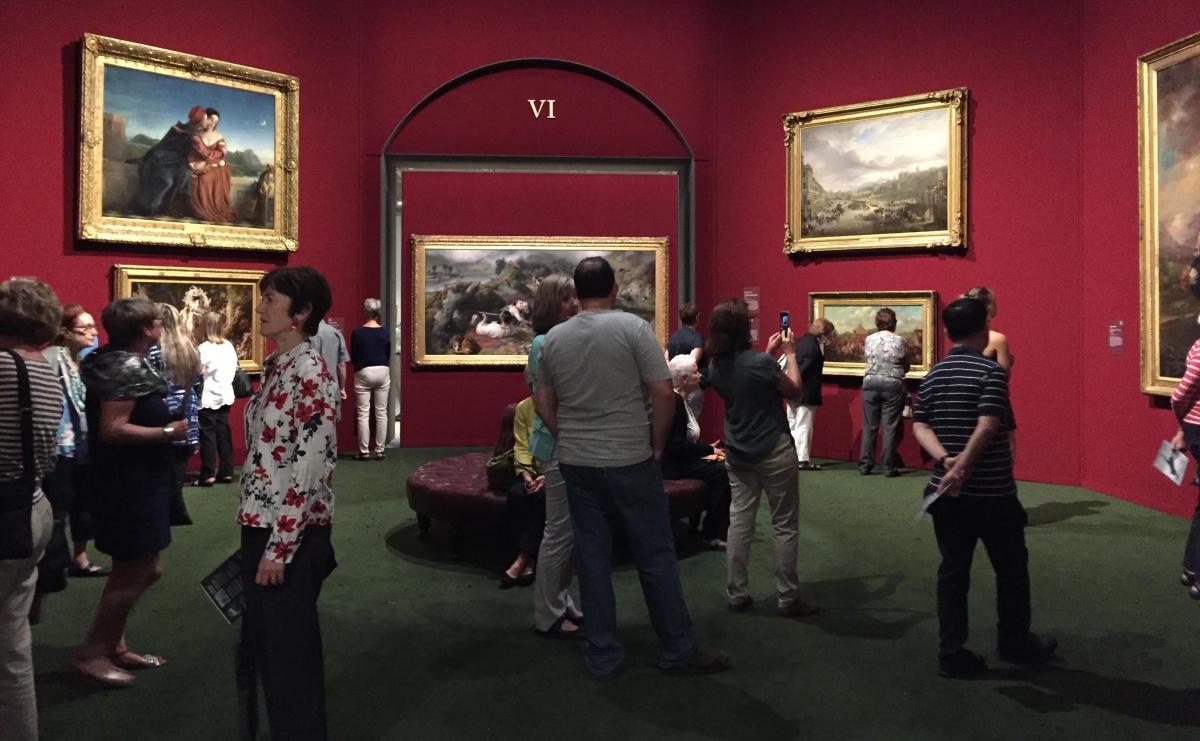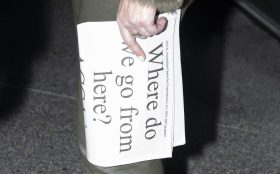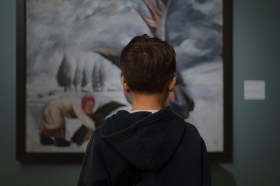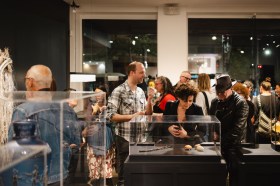For many galleries and museums, closure has been difficult.
For many more, reshuffling a well-planned exhibition program to cater for a slippery reopening schedule is a nightmare. This is most true when it comes to major exhibitions – colloquially known as blockbusters – which travel the globe and draw huge attendances for their “rare” viewing moment.
However, this is a far more complicated conversation than simply kicking some dates further down the calendar. The loans that accompany these exhibitions take years to broker, they are often complicated partnerships between venues, governments and sponsors, and – to top it off – they play a key part in a gallery’s exhibition ecosystem, capturing new audiences and growing revenue streams.
We take a look at what that blockbuster landscape looks like, and how our galleries and museums are accommodating the COVID-chaos in their schedules – and what the fallout might mean for the future.
Negotiations enough to keep zoom in business
The National Gallery of Australia’s (NGA) summer blockbuster, Matisse & Picasso was cut short by two weeks (schedule to close 13 April) largely having already had its fill of audiences. But attendances had taken a knock with the bushfires. Its next blockbuster had to work. But then, the world became blanketed in Coronavirus restrictions, and closures.
The NGA is among the venues that have had to reschedule their major exhibitions for 2020. Its Botticelli to Van Gogh: Masterpieces from the National Gallery, London – 60 paintings by artists who comprise Europe’s roll call of art history – was due to open in November. It will now open 5 March 2021.
Including Van Gogh’s iconic Sunflowers, it is currently stuck in Tokyo at the National Museum of Western Art, where it was due to open 3 March. But Japan’s museums closed on 29 February – its major investment sitting on the walls of darkened galleries for over three months.
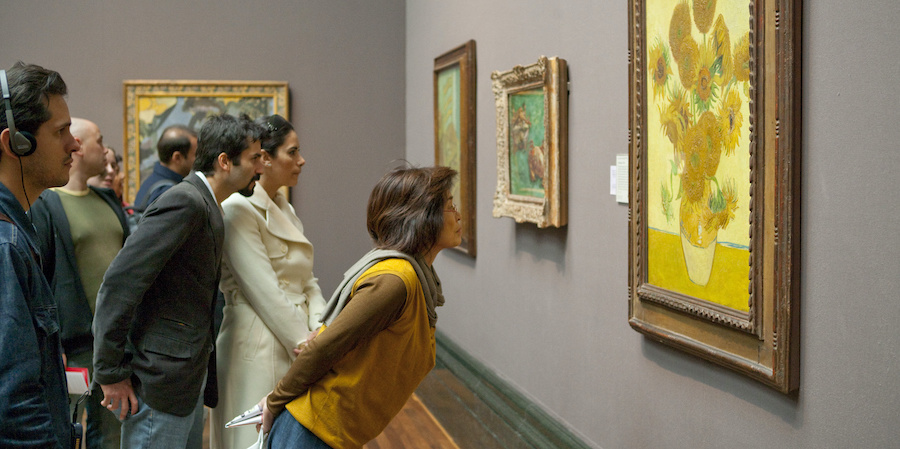
Van Gogh’s Sunflowers (1888) is schedule to visit Canberra March 2021, after a short COVID delay. Image supplied.
To understand what this means could be thought of as “a domino effect”: Tokyo has extended its dates until 18 October, which in turn has delayed its subsequent presentation in Osaka (originally opening 7 July), and of course, has bumped Canberra.
However, the NGA is the lucky one in this story; most of the other blockbusters destined for Australia have been postponed to late 2021, 2022 or beyond.
NGV International’s much anticipated Pierre Bonnard exhibition, originally scheduled to open 5 June 2020, has been pushed back to winter 2023.
As part of the Melbourne Winter Masterpieces, the exhibition was an exclusive for the Victorian gallery, and arranged in partnership with the Musée d’Orsay, Paris.
A spokesperson for the gallery told ArtsHub: ‘There are no other venues before or after the Melbourne presentation. Considering the development of the exhibition to date, and the strength of our international partnerships, we were able to re-negotiate the timing of the loans from the Orsay, and numerous other international lenders, enabling the re-scheduled presentation in June 2023.’
The National Gallery of Victoria (NGV) had commissioned award-winning Iranian Paris-based designer India Mahdavi to design the exhibition experience.
NGV said all is not lost in the postponements. ‘A considerable amount of planning work over several years is required for an exhibition of this scale and scope. By successfully rescheduling the exhibition we were fortunate to be able to retain the work that had been developed to date, including the catalogue design, the exhibition design, interpretive content, which will be reprised in 2023.’
Also scheduled to have opened in June, was the exhibition, Chiharu Shiota: The Soul Trembles, coming to the Gallery of Modern Art (QAGOMA) in Brisbane, following an incredible season at Mori Art Museum in Japan, then a showing in Korea.
Best to think of it like a Rubik cube – you move one face and the other side opens up.
Simon Wright, QAGOMA
Assistant Director QAGOMA, Simon Wright explained: ‘Generally speaking, the impact of COVID on the Shiota show has a whole constellation of issues that we are sorting through. Best to think of it like a Rubik cube – you move one face and the other side opens up.
Wright continued: ‘While not anchored as a firm date in our schedule yet, the hope for us is to do the exhibition in 2022. Her work is so important to the gallery; GOMA has tapped into the Asia Pacific as a headline act.’
While audience will have to wait a little longer for Shiota’s immersive survey, the popularist exhibition, The Motorcycle: Design, Art, Desire, will go ahead as planned, opening 28 November 2020 – 26 April 2021.
‘Our motorcycle show will be the first biennale across the country to open, and discretionary income has changed since it was planned. We are trying to stay on the front foot – to stay brave – and to use that moment to get new market intelligence, as early as we can. There will be lessons to learn,’ Wright told ArtsHub.
What these venues mentioned here have in common – QAGOMA, NGV and the NGA – is the exclusive one-off status of their exhibitions, and the very complex partnerships that they have with State Tourism, event producers, sponsors, and right down to local expectations.
A good example is the Sydney International Art Series, which has attracted more than 2.3 million visitors and 219,000 overnight visitors to the city since 2010, through destination exhibitions.
This year it was scheduled to be presented by American artist Doug Aitken – with his first exhibition in the Southern Hemisphere at the Museum of Contemporary Art Australia (MCA), and Matisse: Life & Spirit, Masterpieces from the Centre Pompidou, Paris at the Art Gallery of New South Wales (AGNSW).
Both exhibitions have been pushed forward to 2021, with Liz Ann Macgregor, MCA Director adding, ‘at this stage we are unable to confirm exact dates.’
Macgregor continued: ‘Working with contemporary artists means you get work directly with the artist and his studio, which is a huge benefit when rescheduling exhibitions.
‘However, there are some major loans that are included in this exhibition, large-scale works by Doug Aitken, that we would like to be able to show especially given many of these works have never been shown in the Southern Hemisphere and will be a major draw card for audiences.’
Described as ‘the greatest single exhibition of Matisse masterworks ever to be seen in Sydney’, AGNSW Director, Michael Brand said of the postponed November exhibition: ‘The restrictions on international travel made it impossible for the Gallery to host the exhibition this year, but that the Gallery was delighted to be staging the major Streeton exhibition over the summer.’
Also a ticketed exhibition, AGNSW has pushed its Streeton exhibition into the spotlight as a kind of “home grown blockbuster”.
We have also seen this trend at the MCA, bumping its major survey of Australian artist Lindy Lee from July to October, dates for the NGV’s survey of Destiny Deacon reshuffled, and the Australian Museum looking to reopen in Spring with a major “local” blockbuster.
It is a re-think that is happening globally.

Hanging Pablo Picasso’s L’Arlésienne: Lee Miller (1937) for NGA’s Matisse and Picasso 2019. Image @nickmitzevich
How difficult is it to move a blockbuster?
In a nutshell, very difficult, says NGA Director Nick Mitzevich.
‘When you are moving works that are incredibly valuable, and contribute to art history, you have to move them with the people who look after them – that is the critical factor – the people. We can pack a work and freight it and move within security [requirements], but it is the conservators and registrars who look after those works, who assess how they travel and know what needs to done. Without them, the works can’t travel.’
Conservation is a big issue. Masterworks are required to “rest” after travelling; they also are the drawcard for local attendance so keeping them off the walls for too long as an impact of host attendance.
Wright pointed out that the Shiota show is very complicated to install, adding further incumbents in a post-COVID environment.
‘The artist is based in Berlin, and a team of studio assistants travel with work, who are heavily involved in its [physical] mapping. We couldn’t even get those six assistants across [to Australia] if we wanted to.’
He continued: ‘With closed shipping lines and restricted air freight alone there is so much uncertainty, so even to do the show at all, has become how soon can we do it [realistically] … To move an exhibition like this is so complicated that sometimes it is not feasible to revisit – this is the trick we are working on at the moment, and to keep all our stakeholders informed.’
Macgregor continued of their Aitkin show: ‘Working with popular artists – like Doug – means that they are often in high demand and have multiple commitments, juggling between their own projects, international exhibitions, and fairs’.
It was a reality that Wright echoed: ‘When you are talking about an extended tour – that is blocks of time added on the other end – you have to consider that the artist probably already has forward commitments, so it becomes a concertina effect right down the line.’
One of the greatest blows to be shouldered has not been caused by contemporary installation complications. Rather, the Australian Museum, who were to reopen their $57 million renovation with the major exhibition, Tutankhamun: Treasures of the Golden Pharaoh, is now postponed with no future date.
Sydney was to be the fifth destination in a 10-city world tour, before the artefacts were to return home for the opening of the new Grand Egyptian Museum, which has also been bumped from an early 2020 completion into 2021.
Kim McKay, Director & CEO, Australian Museum, told ArtsHub: ‘The entire tour schedule has been postponed. The exhibition closed early at the Saatchi Gallery in London due to coronavirus and it has been unable to reopen due to UK Government regulations.’
‘We’re currently working with the exhibition organisers IMG, to try and secure a new date,’ said McKay – but with a bookend date of the new museum’s opening, the Egyptian Ministry of Antiquities is caught between an obligation to commit to the tour, but also obligations to the new museum.
McKay continued: ‘Museums plan their schedules many years in advance and as you can imagine, staging an exhibition of this stature is very complex due to it being a 10-city tour. It requires a lot of co-ordination.’
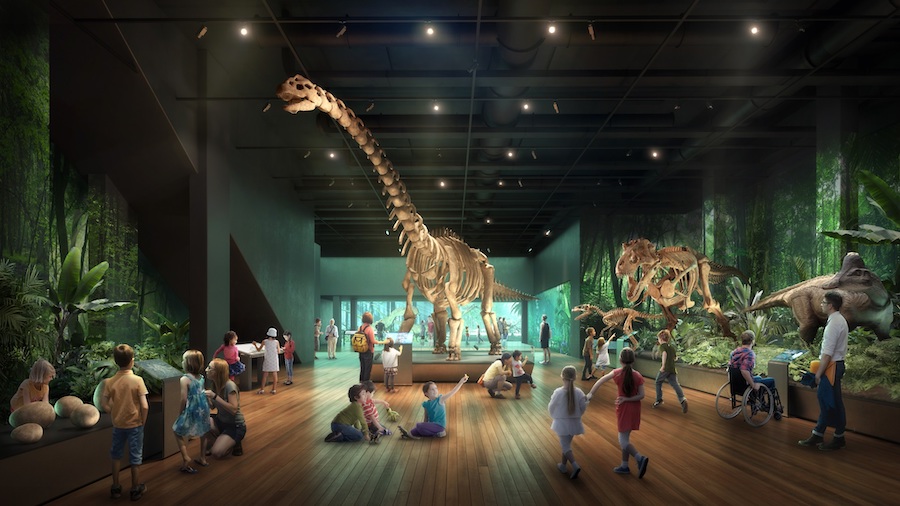
Australian Museum’s new galleries are ready to take major exhibitions. Image supplied.
What is the financial implication of pushing forward?
The common belief is that blockbusters cost mega bucks. Yes, and yes – but they also offer great wins, that is why they have sustained for so long.
Mitzevich explained: ‘With these [exhibitions] our aim is to break even and we do it with the support of our sponsors, partners and private givers, plus revenue through ticketing and merchandise. What we try to do is create a ticket price – a break-even price – but make sure everyone contributes a little to it.’
He said that one in 10 make a lot of money. The more important role is that they bring in first time visitors.
‘If someone comes for the first time through a major exhibition there’s a 60% chance of them returning,’ said Mitzevich. ‘They are a great way to open up the institution, and for me that is the blockbusters most important role.’
This is especially key in a post-COVID environment to translate those new digital audiences to a gallery-going experience.
More than 2.7 million visitors went to see Tutankhamun’s treasures in LA, Paris, and London before the lockdown.
McKay told ArtsHub: ‘This is a ticketed exhibition, and like the Melbourne Museum which hosted a Tut exhibition almost a decade ago, the Australian Museum had hoped to attract upwards of 800,000 visitors from here and overseas.
‘It undoubtedly would have been an economic success for the Australian Museum and NSW. We’re now programming alternative exhibitions, which will appeal primarily to a local audience as it is doubtful international tourism will resume here until mid-next year.’
She added: ‘We will reopen the museum in Spring with a major Blockbuster, which we know will prove popular with local audiences. The AM will continue to develop its own ‘blockbuster exhibitions’ touring to key markets around the world after they premier in Sydney.’
Sydney has long capitalised on its summer blockbuster season, but with major destination exhibitions at AGNSW, MCA, Australian Museum and SEA Museum all postponed this year, the impact has a ricochet affect that extends to hotels, restaurants, taxi drivers and beyond.
Macgregor said simply of their pushed out dates for their Doug Aitkin blockbuster that, ‘the loss of income from this will have some impact on the Museum.’
Mitzevich put their audience as 80% from interstate. ‘We will not understand the full impact of that until down the track,’ he told ArtsHub.
The QAGOMA is taking a role leading in getting up the first major ticketed show in the post-COVID environment.
Wright told ArtsHub: ‘One thing this pandemic has revealed is just how many economies there are. The revenue stream is certainly a big thing to consider, and how those costs are offset – and in an ideal world make some money [on those big ticketed shows] to support other projects. But we are in uncharted territory.
‘Revenue around everything is tighter, which means less people is less book sales, less coffee shops sales – all business is impacted by the changing environment. It is really a confidence game,’ he added.
He believes that the blockbuster has an important role in leading us out of this moment – from a financial level, engagement level and wellbeing perspective.
